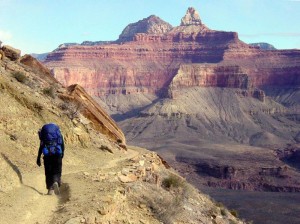 Heat illness is a serious matter in Scouting, as evidenced by more than a few instances where both youth and adults have perished during outdoor Scouting events due to the effects of heat.
Heat illness is a serious matter in Scouting, as evidenced by more than a few instances where both youth and adults have perished during outdoor Scouting events due to the effects of heat.
See this 2009 story. And, this 2013 story. And, this 2017 story. And, this 2017 story. And, this 2019 story.
Heat illnesses during Scouting events that have tragic outcomes should generally be avoidable, assuming the following:
- Adult volunteers maintain vigilance of the signs of heat illness among participants;
- Participants (both youth and adults) are pre-screened to ensure that those who may constitute high risk (due to medical issues, body mass, etc.) are either more closely monitored, or advised to avoid the activity;
- The activity is scheduled to occur during those days and/or times of day that serve to minimize the exposure of the participants to environmental conditions of high risk;
- Effective hydration practices are utilized (will there be sufficient water available?);
- The activity is selected to minimize heat illness risk; and
- The activity, once selected, is modified during its conduct to the extent required by the conditions encountered and/or the effect of those conditions on the participants, to mitigate the risk of heat illness, and the status of participants closely monitored.
 Attention is also directed to the website Ariel’s Checklist which provides much useful information directed to the effects of heat illness and methods of mitigating same, to which Scouting volunteers’ attention is directed.
Attention is also directed to the website Ariel’s Checklist which provides much useful information directed to the effects of heat illness and methods of mitigating same, to which Scouting volunteers’ attention is directed.
Indeed, Ariel’s Checklist makes clear that “exertional heat stroke” is a real risk under challenging temperature conditions, as the body cannot dissipate heat generated by the activity fast enough, resulting in dangerous overheating. For Scouting youth and adults participating under challenging heat conditions, exertional heat stroke is a real risk, as shown by the above stories.
The Ariel’s Checklist website recommends the following safety guidelines for hiking in the desert, which guidelines similarly apply to hiking in any environment within which heat issues may arise:
- Acclimate to the heat over a period of time;
- Ensure the hike is appropriate to the skill and fitness level of the hiker;
- Ensure proper hydration;
- Wear loose-fitting, moisture-absorbent or moisture-wicking clothes;
- Ensure adequate sleep (for multi-day hikes);
- Ensure that the wet bulb globe temperature index is below 89 degrees F.;
- Ensure adequate exercise/rest cycles to minimize overheating (remember – exercise generates body heat that must be dissipated to avoid overheating);
- Avoid hiking during the hottest part of the day;
- Bring adequate resources to assist anyone suffering from the heat; and
- Emphasize that each hiker should speak out upon not feeling well to ensure prompt medical treatment.
Finally, this article about Arizona hiking deaths due to heat makes the point that such deaths should be avoidable with a little preparation, mindfulness, and common sense.
Indeed, pay attention to the temperature forecast, and bring a thermometer!
Safe hiking!
